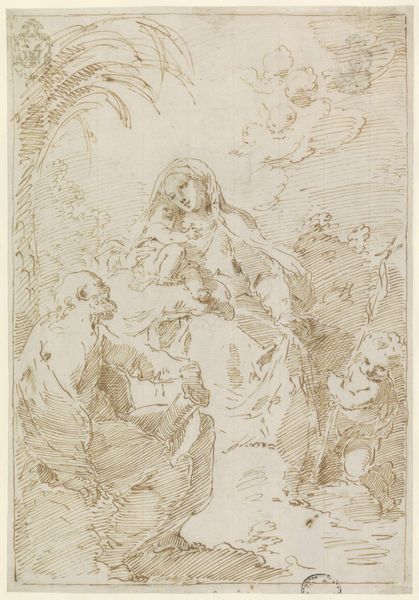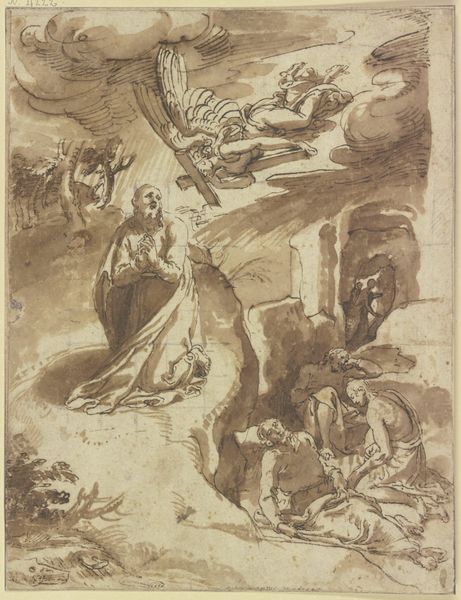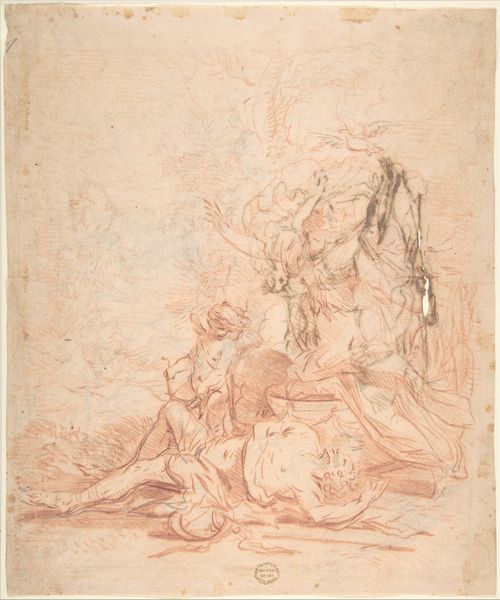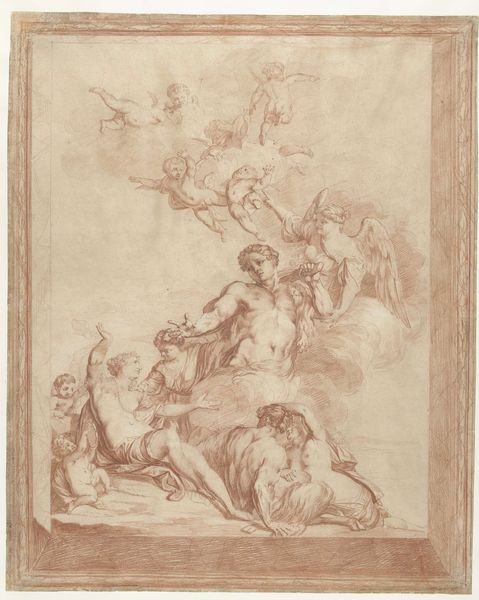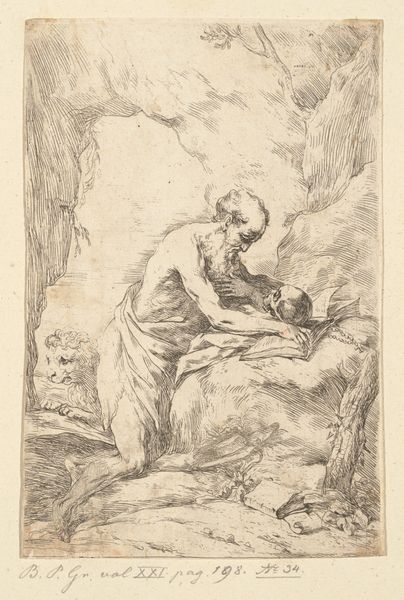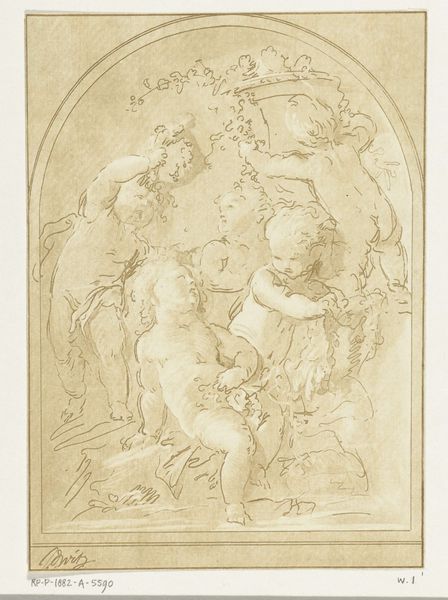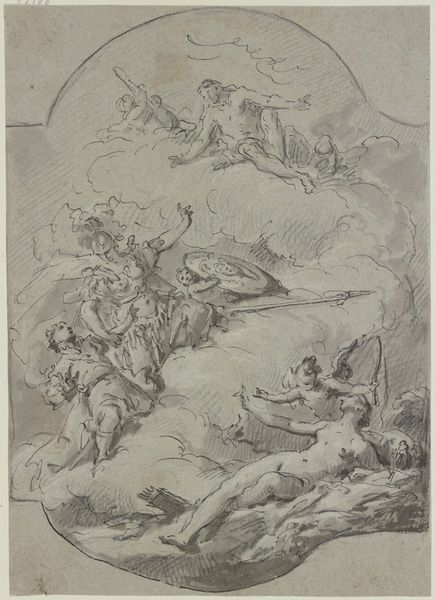
drawing, print, ink, charcoal
#
drawing
#
narrative-art
#
baroque
# print
#
charcoal drawing
#
figuration
#
ink
#
charcoal
Dimensions: 9-1/4 x 7-5/16 in. (23.5 x 18.6 cm)
Copyright: Public Domain
Editor: Here we have Jusepe de Ribera's "Adoration of the Shepherds," created around 1645 to 1650, with ink and charcoal. The monochrome washes create an ethereal feel. How do we interpret its construction? Curator: Ribera's use of ink and charcoal moves beyond simple representation. It's about the materiality, isn't it? The roughness of the charcoal, the fluidity of the ink - each choice emphasizes the labor involved, connecting the sacred scene with the everyday realities of the artist and, by extension, the laborers who constituted his world. Look how the drawing foregrounds the rough garments of the shepherds in the foreground. Does it invite the viewer to reflect on who toiled? Editor: That's fascinating. I hadn’t considered the roughness of the materials as a link to labor. What about the consumer aspect? Was there a market for works like this? Curator: Absolutely. Prints like this circulated widely, functioning as devotional objects, of course, but also as commodities. Ribera skillfully straddled the line between "high art" and a more accessible, reproducible form. It would've been consumed by religious institutions, elite collectors and a growing middle class eager for devotional items. Who did he assume was looking at his works? Editor: So the material choices and methods made the art, not just literally but economically and socially too? That almost feels… radical. Curator: Precisely. The "Adoration" isn't just a religious image; it's a product of its time, shaped by the labor, materials, and systems of exchange available to Ribera. Understanding the means of production provides invaluable insight into its meaning. Editor: It's remarkable how analyzing materials reveals deeper layers of context, questioning assumptions about 'high' and 'low' art forms. I’ll never look at art the same way again. Curator: And I'm always renewed when connecting material circumstances and historical context to works of art.
Comments
No comments
Be the first to comment and join the conversation on the ultimate creative platform.

